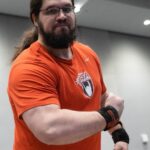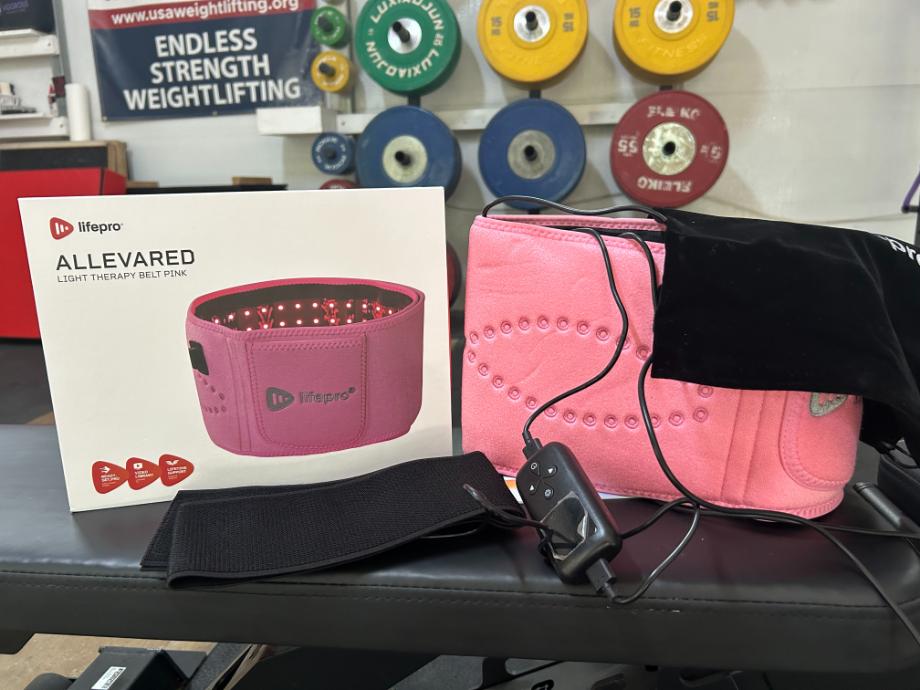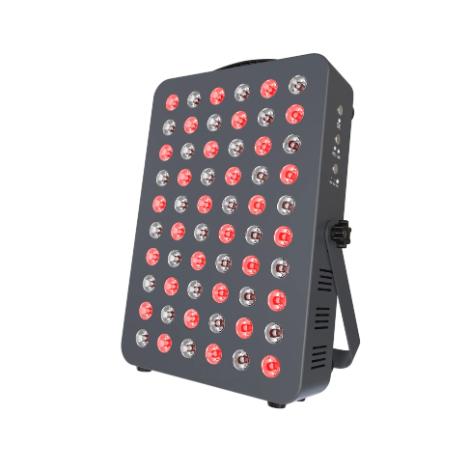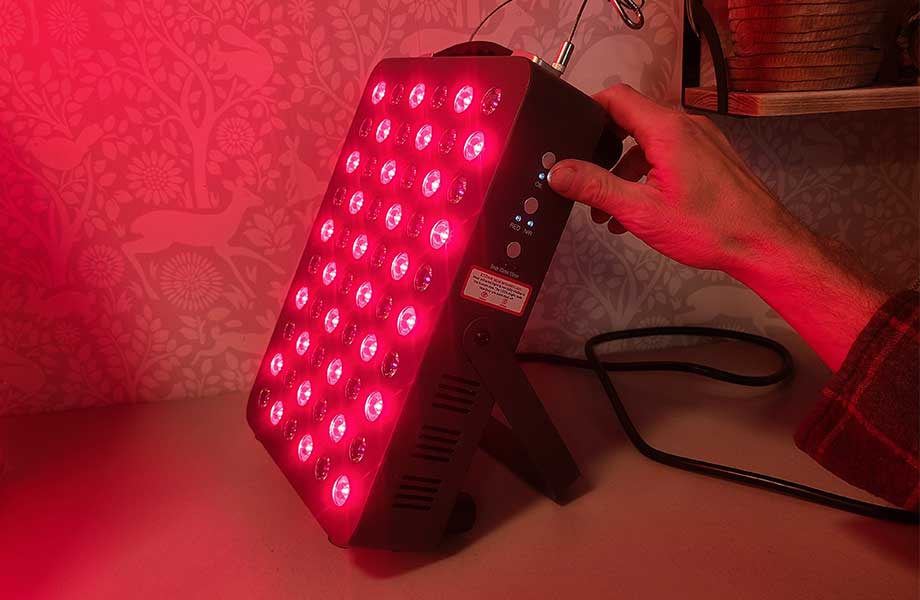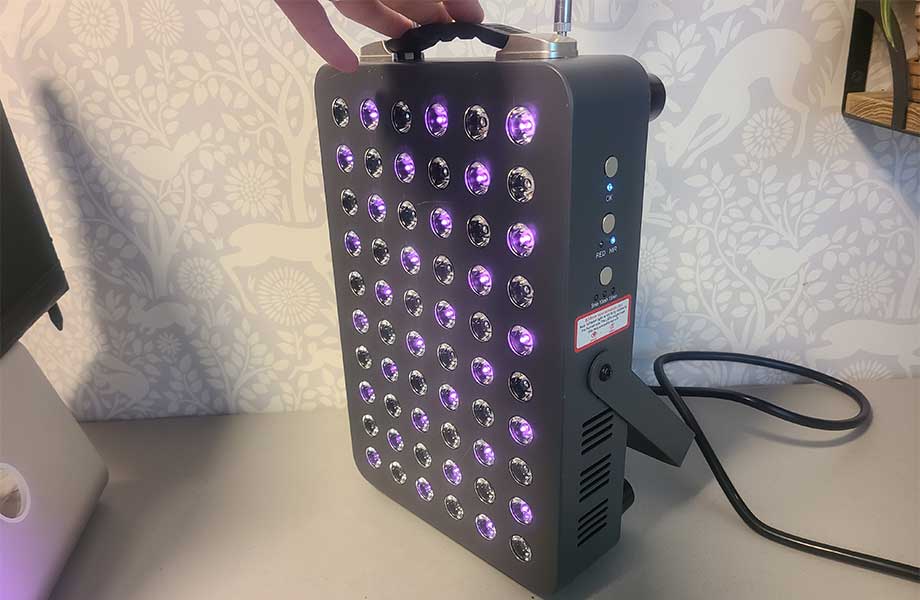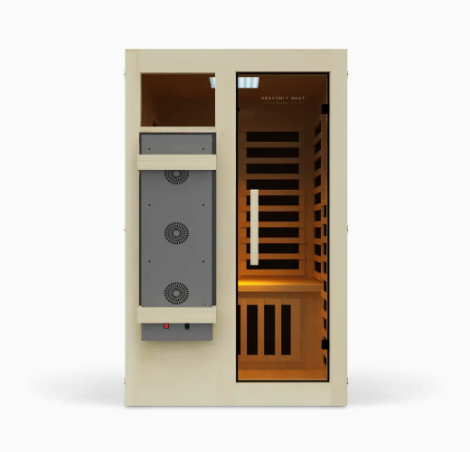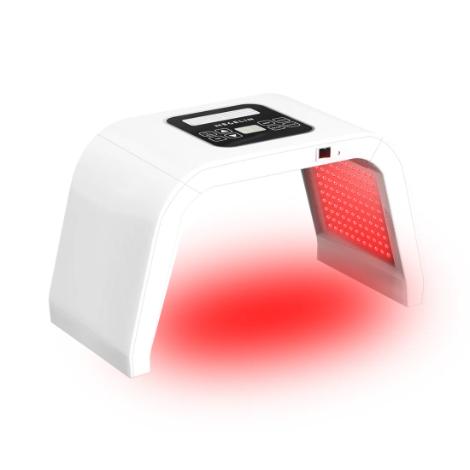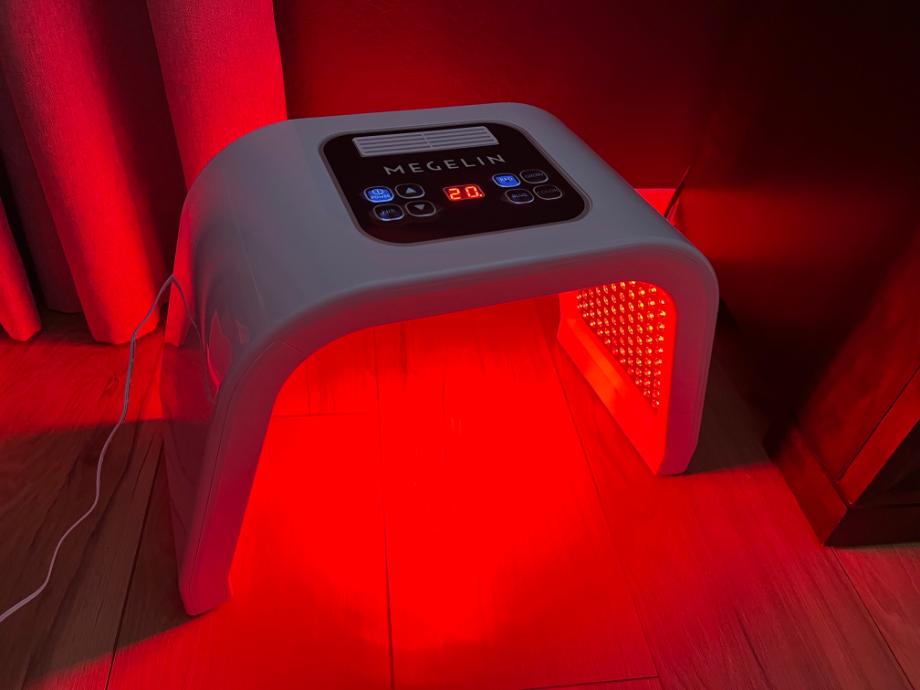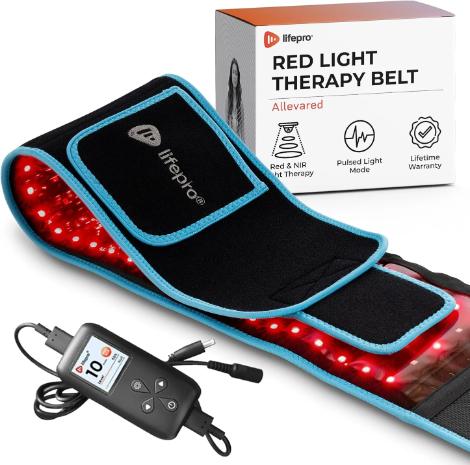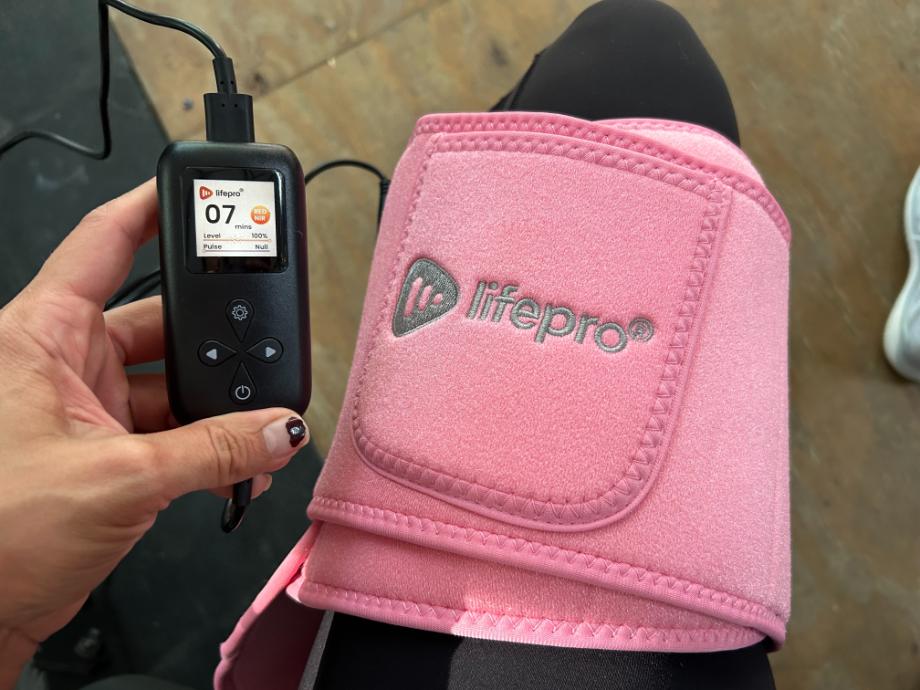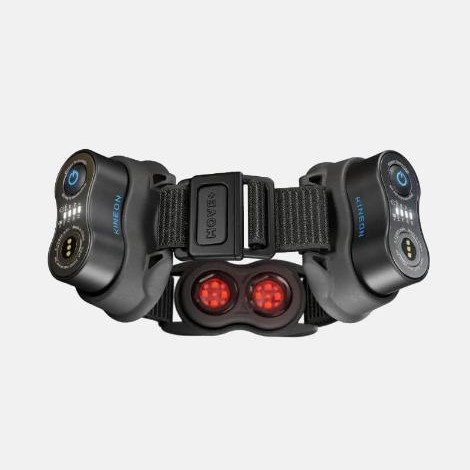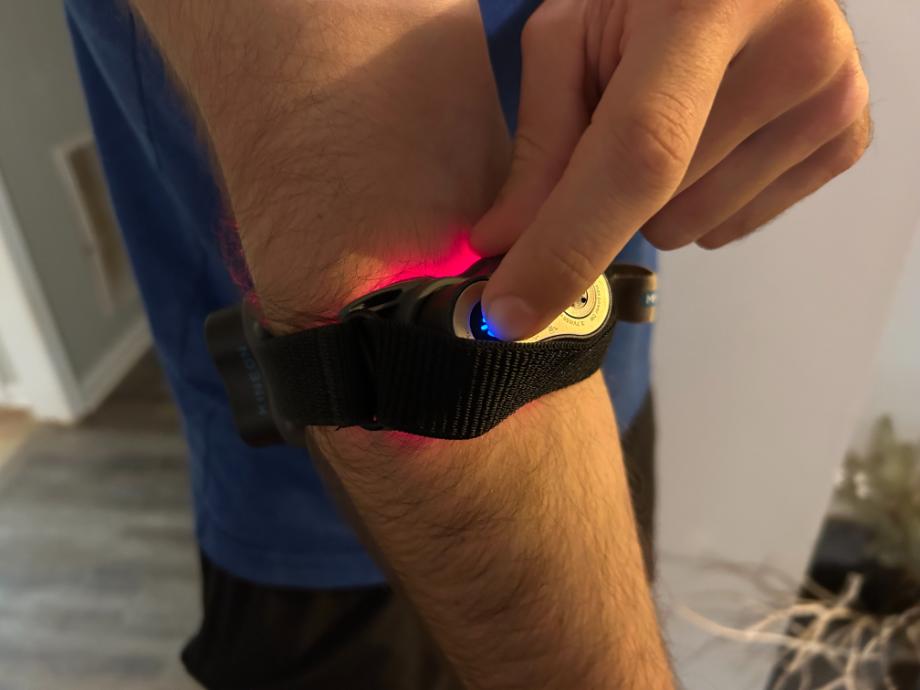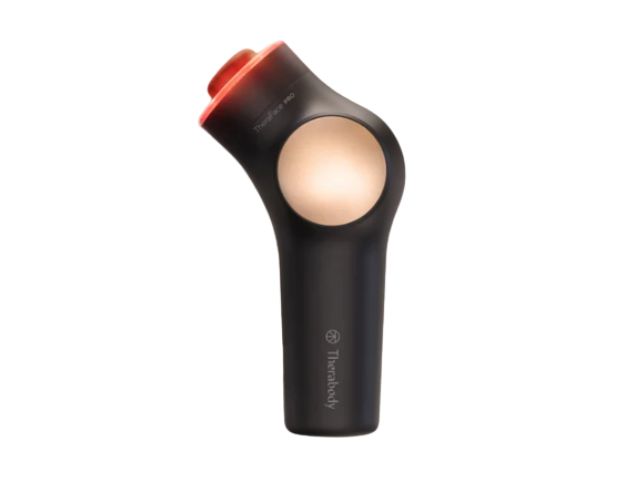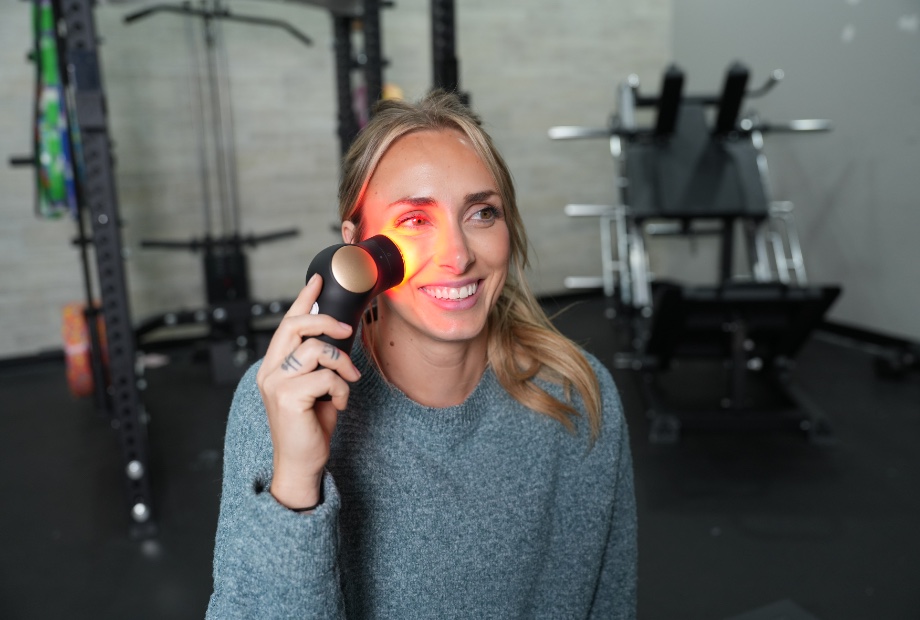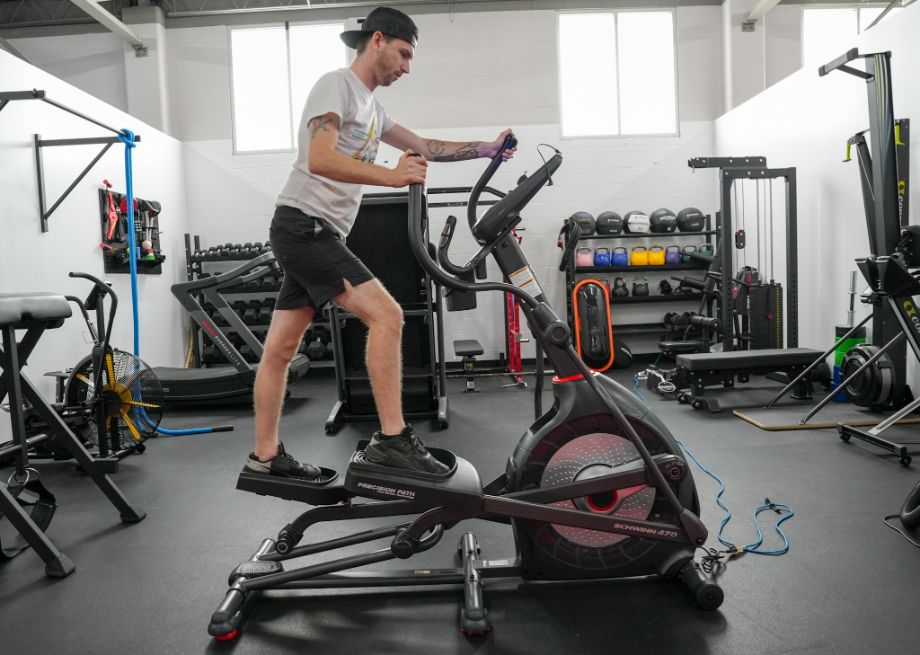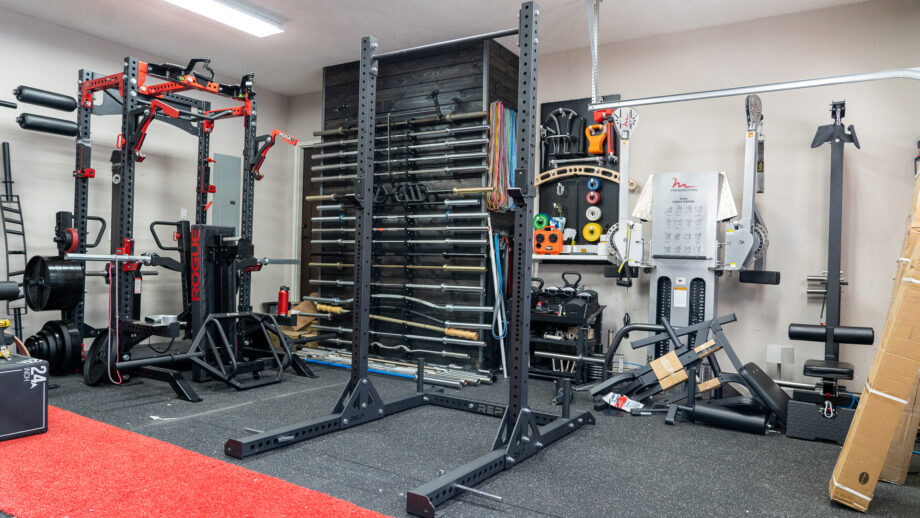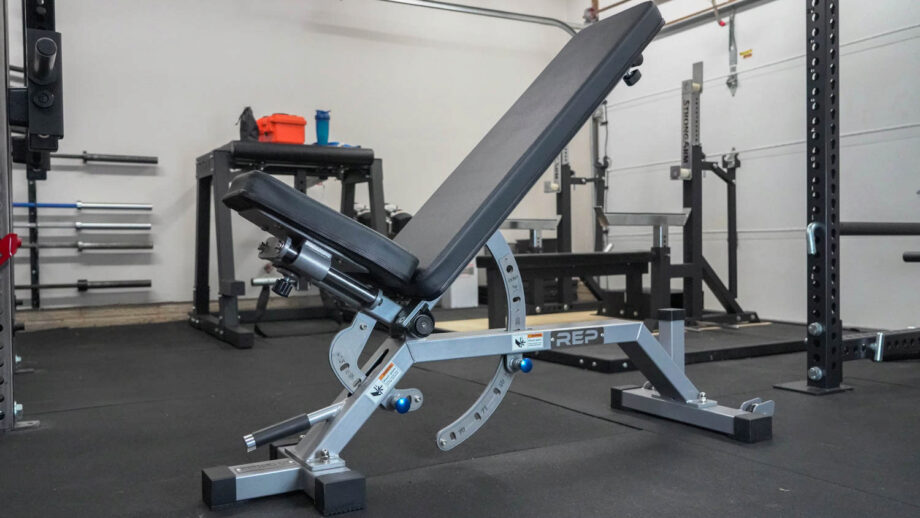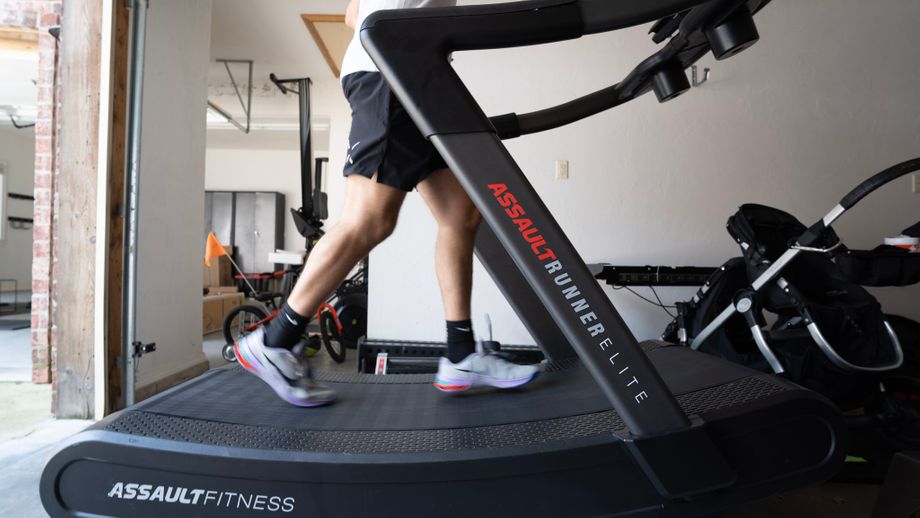In the fitness and health world, new alternative methods to recovery are constantly being released and improved upon—from the best cold plunge tubs to the best acupressure mats, and everything in between. Some are simply fads, while others have been shown to produce results.
Here, I’m going to cover one of the latest biohacking products to gain momentum in the market: the best red light therapy devices. The team at Garage Gym Reviews has tried out top brands and different light therapy treatments to bring you a well-rounded list of top products to fulfill your needs for muscle recovery and skin care—and some benefits you may not know about yet.
With our team of certified personal trainers, CrossFit Level 1 trainers, weightlifting coaches, and athletes, we’ve tested these at-home devices looking for their effectiveness, ease of use, and overall value.
I myself, an Olympian and internationally competitive weightlifter, have used red light therapy for the past year in my recovery; I’ll go over my experience with these red light therapy devices, as well as the results found by the rest of our fitness experts. Along with the effectiveness, we looked at other factors, including light intensity (irradiance), frequency (wavelength), ease of use, and overall value.
So with that said, let’s dive into the finer points of phototherapy and these devices.
The Best Red Light Therapy Devices
- Best Red Light Therapy Device Overall: Hooga Red Light Therapy Panel
- Best Red Light Therapy Sauna: Heavenly Heat 2-Person Red Light Therapy Infrared Sauna
- Best Red Light Therapy Device with Other Lights: Megelin Red Light Therapy Machine
- Best Red Light Therapy Wrap: LifePro Red Light Therapy Belt
- Best Deep Tissue Red Light Therapy: Kineon The MOVE+ Pro
- Best Red Light Therapy for Face: Therabody Theraface PRO
What Is Red Light Therapy?
Red light therapy (RLT) is a non-invasive treatment using low-level wavelengths of either deep red light or near-infrared light—or often a combination of the two. These frequencies, around 660 and 850 nanometers,1 respectively, are supposed to increase activity in the cell’s mitochondria and their production of ATP (adenosine triphosphate), which allows for faster healing and recovery.
Also known as photobiomodulation and low-level laser therapy, modern red light therapy was discovered by NASA in the 1990s2 when astronauts who were studying plants in red and blue light noticed faster healing on minor cuts on their hands after constantly handling the plants under the lights.
With growing research showing benefits in muscle recovery, joint pain relief, and anti-aging, you can find red light therapy at the doctor’s office, health and beauty spas, and dermatology clinics. There’s been a recent boom of at-home red light therapy and LED light therapy devices. Without further ado, let’s look at our top choices.
Other Light Therapy Colors
If you’re curious about other light therapy color options, here is a quick breakdown:
- Blue light treats the surface of your skin
- Yellow light treats just beneath the skin
- Red light treats deeper into your skin
- Near-infrared treats the deepest and can penetrate muscles
Best Red Light Therapy Device Overall: Hooga Red Light Therapy Panel
Good for: Those wanting a versatile panel for a variety of treatment areas
The Hooga HG300 is an affordable option for at-home red light/near infrared light therapy. Since it is a whole body device and not focused on a body part it will require safety goggles. You also have to adjust your positioning to treat different body parts. Most customers were satisfied with the device and thought it was effective. If you’re one of the customers that doesn’t like the device they have a 60-day period for full refunds when purchased from their site.
What our tester says:
“At $170, this panel is very versatile and feels high quality. Depending on what you are hoping to get out of it, I think it’s a reasonable value compared to similar products.”
Best Red Light Therapy Sauna: Heavenly Heat 2-Person Red Light Therapy Infrared Sauna
Good for: People wanting a complete light therapy experience in their sauna
The Heavenly Heat 2-Person Red Light Therapy Infrared Sauna combines a sauna, red light therapy, and grounding into one. It’s not cheap, but it uses premium materials and provides more benefits than your average sauna.
Best Red Light Therapy Device with Other Lights: Megelin Red Light Therapy Machine
Good for: Anyone wanting phototherapy using a broad array of LED lights
The Megelin LED light therapy machine includes seven different wavelengths of light, each with a different benefit. This machine was designed primarily to improve the health of skin; however, it can also be used on other parts of the body to reduce inflammation and pain. Customer reviews were generally positive and people noted improvements in the appearance of their skin. Still, there were complaints about the quality of the customer service when there were issues.
What our tester says:
“This machine is great. It’s a pretty big panel that I can easily fit over my head, arms, or legs – it’s a little too narrow for my torso, but fine for anything else.”
Best Red Light Therapy Wrap: LifePro Red Light Therapy Belt
Good for: Those looking for a large wrap to target large muscles and joints
The LifePro Red Light Therapy Belt is designed to help improve your recovery. The belt’s circumference ranges from 8 to 43 inches so it can be used on various parts of the body. Customer reviews generally found it helpful. However, multiple customers had issues with the belt malfunctioning within a year of ownership. They also had difficulty reaching customer service to use the lifetime warranty.
What our tester says:
“This has been great for my lower back pain, but I haven’t really used it anywhere else because my lower back is all I can really put it on effectively.”
Best Deep Tissue Red Light Therapy: Kineon The MOVE+ Pro
Good for: Those who are looking to target joint and muscle aches
The Kineon MOVE+ Pro is a light therapy device designed to decrease your joint pain. It uses 3 light emitting modules that are inserted into an adjustable strap. Many customers experienced pain relief using the device. However, some did not see results. You can try the device at home for 30 days, if it doesn’t help your pain you can get a refund.
What our tester says:
“This isn’t cheap, however, I think it’s totally worth it. Our chiropractor has this and uses this on patients, and it’s for a reason! We saw benefits and we continue to use this every week. It’s an investment, but a worthwhile one.”
Best Red Light Therapy for Face: Therabody Theraface PRO
Good for: People needing help with blemishes, fine lines, and other skin conditions
Therabody TheraFace PRO uses six included attachments to provide both facial massage and facial therapies. According to Therabody, the device can reduce wrinkles around the eyes, relax facial muscles, increase circulation, reduce inflammatory acne, and relieve tension. Hot and cold rings are available for an additional $100. There are a variety of contraindications for each attachment, so check the Therbody website prior to purchasing.
What our tester says:
“I liked the LED red light setting, It felt slightly warm on my face and overall just comforting knowing I was taking care of my skin.”
Other Red Light Therapy Devices We Tested
Not every red light therapy device we tried made our top list. Here are a couple products worth mentioning that didn’t quite break into our panel.
- NovaaLab Deep Healing Pad: The NovaaLab Deep Healing Pad is a powerful tool, combining red light with infrared light for optimal recovery. I used it to help heal from a knee injury; however, since then the price has risen quite a bit, which has dropped its value.
- Sunlighten Solo Portable Infrared Sauna: This portable infrared sauna also has chromotherapy options, allowing for red light therapy, along with other lights as well. While it may be a good portable option for a sauna, we felt it might be tight quarters for larger people.
How We Picked and Tested Red Light Therapy Machines
To construct our list of the best red light therapy devices, our team of fitness experts tried out several top brands in the industry. Being that we all have fitness backgrounds, we looked at red light therapy more for muscle and joint recovery; however, we still tested and made picks that can help with certain skin conditions and anti-aging.
Because we were focused on muscle recovery, we kept our devices to panels, wraps, and guns. Although LED hats are made to prevent hair loss and promote hair growth, we didn’t try any out. The same goes for light therapy masks and LED masks, since these devices solely focus on facial treatments and not so much muscle recovery.
We looked at certain aspects of each red light therapy device according to our fitness equipment testing methodology—including customer service and reviews, as well as policies on warranty, returns, and financing. Here are some other criteria we used to rate and rank our red light therapy devices:
- Irradiance: Does the red light therapy provide enough energy to penetrate into muscles and joints?
- Frequency: Does the RLT device offer a range of wavelengths from the red light and near-infrared part of the light spectrum (about 600 to 850 nanometers)?
- Effectiveness: Does the device work as intended and did it provide effective results (especially when it comes to muscle recovery)?
- Coverage: How much area can the device treat, and how versatile is its use?
- Ease of use: How easily can you apply the device and begin your red light therapy treatment?
- Value: Does the price match the versatility and effectiveness of the device?
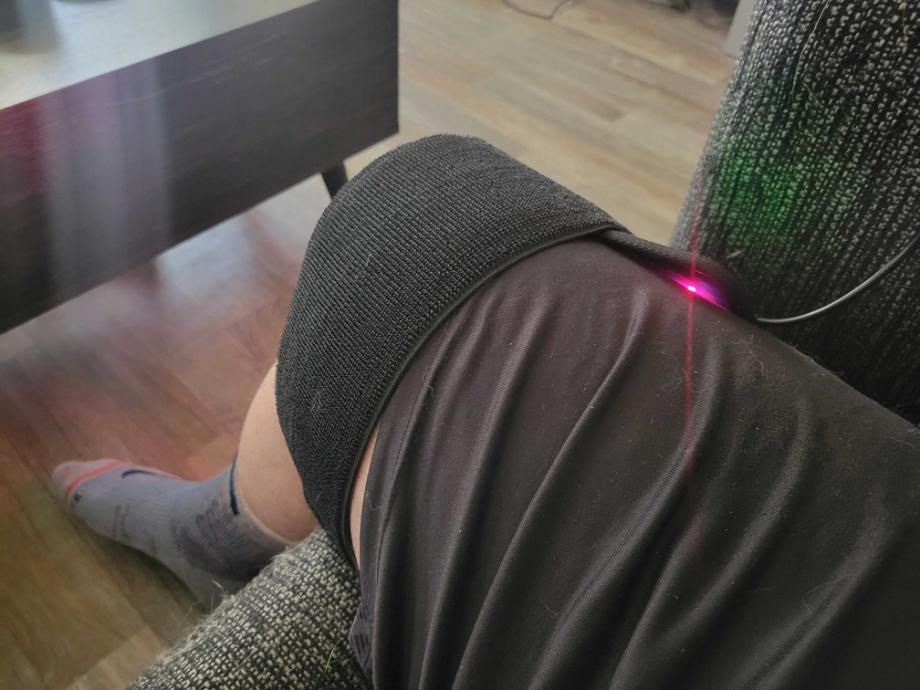
Benefits of Red Light Therapy
While it’s not a magical medicine that solves every problem, red light therapy has quite a few benefits, some of which are surprising. Adding it to other recovery methods—using a home sauna, for example—can prove to have several benefits.
Reducing Inflammation
While using a turmeric supplement with a balanced diet can help to ease up chronic inflammation, red light therapy seems to help as well. In particular, a study from 20175 showed that one of the most reproducible benefits of red light therapy is a reduction of inflammation. Not just inflamed muscles, either: the study particularly pointed out a reduction of inflammation in the brain, abdominal fat, wounds and injuries, spinal cord, and lungs, too.
Aiding Muscle Recovery
Red light therapy can prove to be an effective muscle recovery tool, repairing the micro-tears that occur from weight lifting. One review from 20176 that analyzed several randomized control trials and case studies found that deep red and near-infrared light therapy can help heal and regenerate damaged muscle tissue. It went even further and showed that it could also increase the muscle mass gained after training, too.
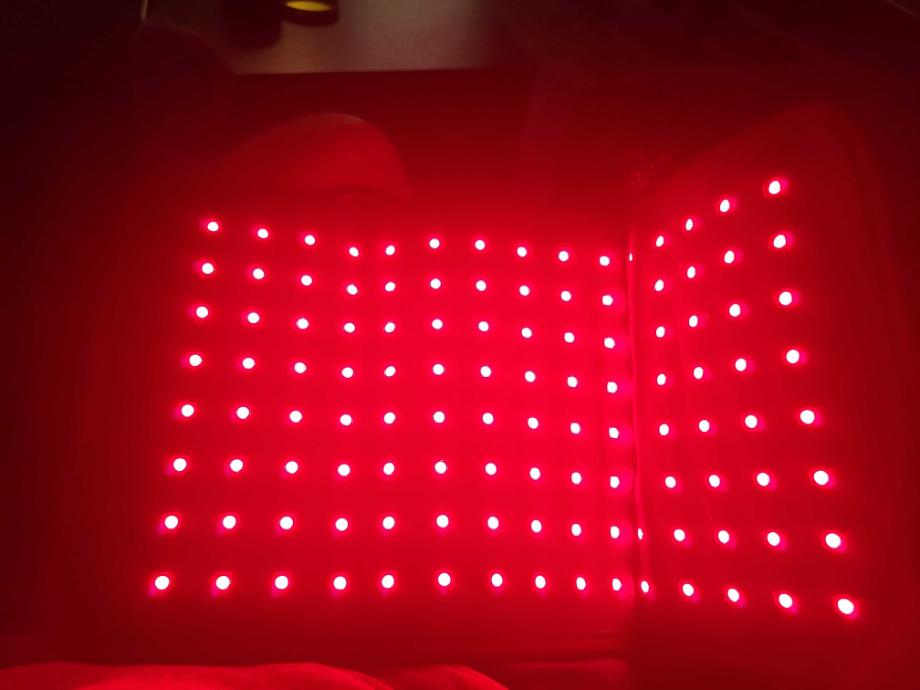
Providing Pain Relief
As a competitive weightlifter, I deal with chronic pain from overuse injuries, such as tendinitis. Red light therapy can help alleviate chronic joint and tendon pain, as seen in a 2022 study7. In the study, red light therapy treatments didn’t only help with acute and chronic musculoskeletal conditions, but also relieve other pain-related conditions like fibromyalgia, low back pain, and non-specific knee pain.
Speeding Up Wound Healing
Red light therapy—particularly deep red light—has been shown to speed up wound healing, as seen by NASA scientists in the 1990s. The wavelengths help stimulate cells called fibroblasts to form connective tissues. A study from 20238 demonstrated that wound healing was sped up on an in vitro sample of tissue, showing that the same results could happen to an in vivo sample (a living organism).
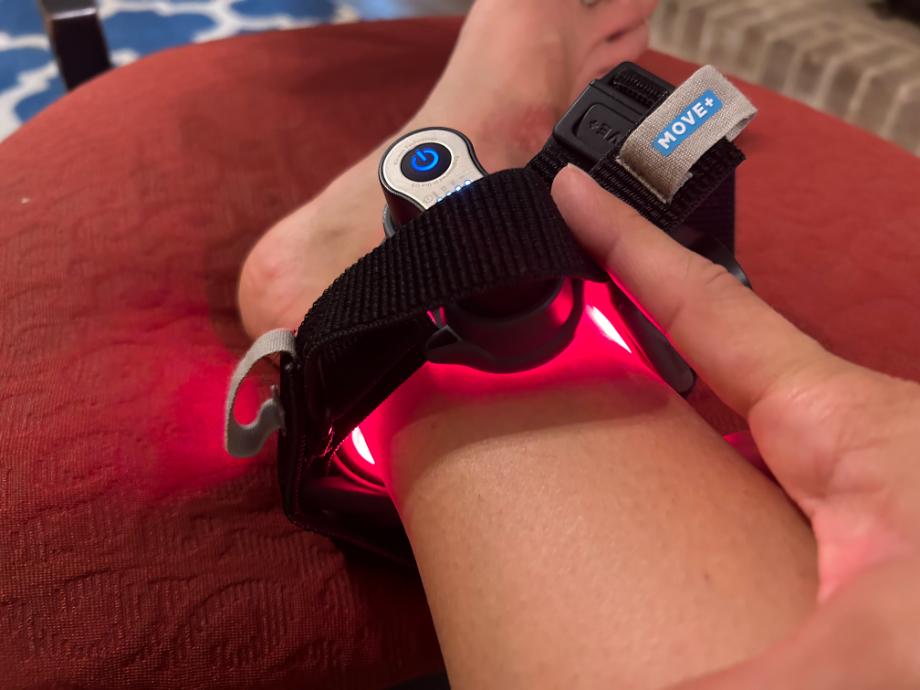
Helping With Fine Lines and Wrinkles
While it’s not the legendary fountain of youth, red light therapy has been shown to help rejuvenate your skin with certain anti-aging effects, like lessening wrinkles. According to a study from 20209, low-level laser light therapy can be an effective treatment for aging skin, as the fibroblasts stimulated during the treatment also aid in collagen production, a vital component to the elasticity and structural integrity of your skin…and nails, hair, and more.
Treating Skin Conditions
Phototherapy has been shown to be helpful in treating certain skin conditions, such as acne, rosacea, eczema, and psoriasis. In particular, a 2018 study10 had patients with plaque psoriasis clear up between 60% and 100% of their skin after two weekly red light therapy sessions for one month.
Promoting Hair Growth
Photobiomodulation can be an effective tool for hair loss, too, according to a 2021 study from the Journal of Cutaneous and Aesthetic Surgery11. The study found that red light therapy was able to stimulate hair growth in both men and women, meaning RLT may prove to be a safe, non-invasive treatment for those suffering from hair loss or alopecia.
Side Effects of Red Light Therapy
Red light therapy is non-invasive and generally considered a safe practice and treatment. However, there are certain precautions you may want to take to keep it safe.
For one, near-infrared light can produce warmth and heat. Over time, that heat can irritate your skin, or in rare cases, cause blisters or burns. Never use a red light therapy device longer than the recommended time (usually between 10 and 20 minutes), as using it for longer in a single session may increase your chance of skin irritation or burns.
Also, wear eye protection if you’re using a LED face mask or red light therapy bed, as lights on these devices can irritate your eyes.
Talk to a board-certified dermatologist before using a red light therapy device if you are concerned about skin sensitivity. Also, don’t use red light therapy if you’re pregnant, or if you have a heightened eye sensitivity.
RELATED: Red Light Therapy Dangers
What to Look for in Red Light Therapy Devices
There’s a lot of different devices in the world of chromotherapy, and it can be a hassle to determine exactly what you want or need. To help you out in your search, here are some things to consider before making your red light therapy purchase.
Light Intensity
The irradiance (aka light intensity) of a red light therapy device is a measurement of the light energy your body can receive from a certain distance of the LED lighting. This measurement is typically given in milliwatts per square centimeter. The larger the number, the more power and energy the light can bring, meaning it’ll be easier to penetrate the skin’s surface for deep tissue therapy.
An irradiance of 25 to 120 milliwatts per square centimeter is best for skin treatment, while an irradiance over 120 milliwatts can also penetrate to deeper muscle tissues and joints.
The distance of an irradiance reading is also important, as the irradiance dissipates the farther away from the light it goes. For a light therapy wrap, you’ll want to know the irradiance at 0 inches, since that’s how far the wrap will be while in use. Panels may have several measurements, since you may have it at different distances while in use, depending on the treatment area and purpose.
Finally, irradiance isn’t always disclosed by brands. In that case, wattage is a good indicator of power output. While there aren’t exact numbers, the main thing is that a higher wattage is usually better.
RELATED: What Is Red Light Therapy?
Frequency
Deep red light and invisible near-infrared light are on specific wavelengths: around 660 and 850 nanometers, respectively. Red light doesn’t penetrate as deep as infrared light, so it’s typically used more for surface-level treatments, while infrared light is for deep tissue recovery.
Red light therapy devices can use red light, infrared light, or a combination of the two. We prefer devices that use both. Bonus points if a RLT device has extra features, like intensity levels or the option to use red light or infrared light only.
Red Light Coverage
During your comparison shopping process, you’ll want to think about where you’ll want to apply red light therapy and how well will a device cover your desired treatment area. The size and coverage can vary, from laser-like pinpoints to a full red light therapy bed, which surprisingly looks a lot like a tanning bed. While they can work for in-office use at the doctor’s, these larger options often aren’t a viable option for at-home use.
Effectiveness
Before you buy, consider some of the benefits I listed in the section above (pain relief, skin treatment, wound healing, etc.). If a brand is claiming its RLT device can treat or cure diseases, I’d say that’s a red flag.
Value
Although red light therapy devices for home use can vary from a couple hundred bucks to $1,000 or more, the bottom line is that they can be pricey. We found that larger devices like full-length panels and light therapy beds can cost thousands of dollars.
Whatever device you choose to go with, make sure it can still fit within your budget. Also, make note of any financing options, or if devices are HSA- or FSA-eligible.
Intended Use
What kind of benefits are you looking for? Typically, deep red lights can help with skin care, while near-infrared light can help more with muscle and joint recovery or healing. For more surface-level treatments, look for a device with a lower irradiance (usually between 25 and 120 milliwatts per square centimeter) or with primarily red LED lights. For more deep tissue benefits, search out a higher irradiance and primarily near-infrared bulbs.
Device Type
The type of device you choose should reflect your intended purpose. If you’re looking to use it for your back or large joints, a large wrap may be ideal. For smaller areas or to pinpoint the pain, a smaller module device might be your better choice. If you’re looking for facial rejuvenation, a face mask or light therapy gun may be your best bet.
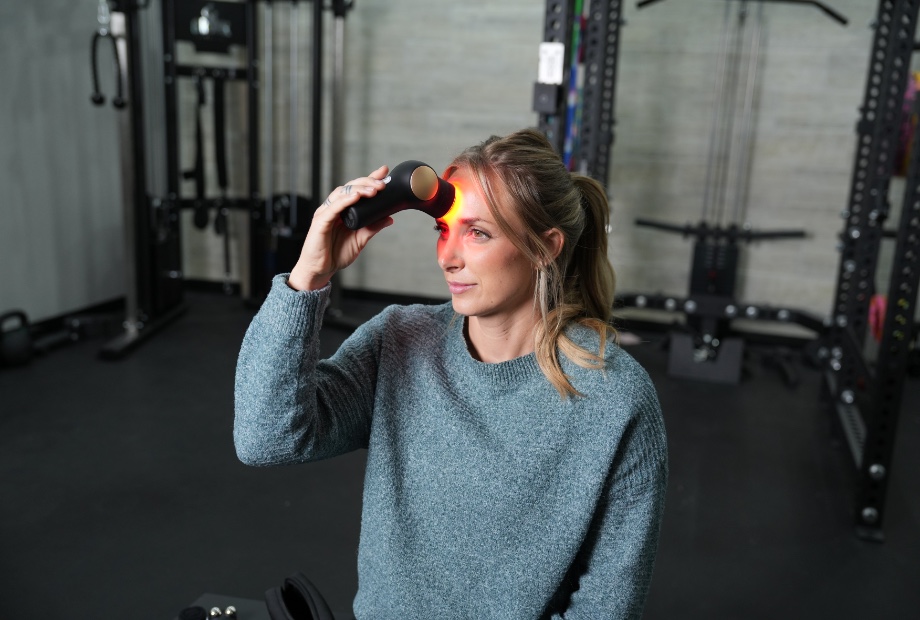
Experts Who Contributed To This Article
Best Red Light Therapy: FAQs
What level of red light therapy is the best?
While frequencies between 630 and 910 nanometers are used for red light and infrared light therapy, the most common frequencies (and also the most effective1) are around 660 nanometers for deep red light and 850 nanometers for near-infrared light.
Are at-home red light therapy devices worth it?
With purported benefits of reducing inflammation, helping with muscle recovery, and even helping with skin conditions, an at-home red light therapy device can be a beneficial product to add to your recovery routine. While it’s not a magical tool that removes all pain, it can definitely help when supplemented with other muscle recovery tools.
Which wavelength of red light is best for skin rejuvenation?
Unlike near-infrared light, deep red light doesn’t penetrate much past your skin, so this is the ideal light and frequency to work on skin rejuvenation and anti-aging benefits. This wavelength is usually between 630 and 660 nanometers.
What is the most effective red light therapy device?
When it comes to muscle recovery and pain relief, our No. 1 choice for red light therapy device is the NovaaLab Deep Healing Pad. For face and skin treatment, we like the Therabody Theraface PRO.
References
- Tafur, J., & Mills, P. J. (2008). Low-intensity light therapy: exploring the role of redox mechanisms. Photomedicine and laser surgery, 26(4), 323–328. https://doi.org/10.1089/pho.2007.2184
- NASA research illuminates medical uses of light | NASA spinoff. (n.d.-b). https://spinoff.nasa.gov/NASA-Research-Illuminates-Medical-Uses-of-Light
- Diogo, M. L. G., Campos, T. M., Fonseca, E. S. R., Pavani, C., Horliana, A. C. R. T., Fernandes, K. P. S., Bussadori, S. K., Fantin, F. G. M. M., Leite, D. P. V., Yamamoto, Â. T. A., Navarro, R. S., & Motta, L. J. (2021). Effect of Blue Light on Acne Vulgaris: A Systematic Review. Sensors (Basel, Switzerland), 21(20), 6943. https://doi.org/10.3390/s21206943
- Azeemi, S. T. Y., Rafiq, H. M., Ismail, I., Kazmi, S. R., & Azeemi, A. (2019). The mechanistic basis of chromotherapy: Current knowledge and future perspectives. Complementary therapies in medicine, 46, 217–222. https://doi.org/10.1016/j.ctim.2019.08.025
- Hamblin M. R. (2017). Mechanisms and applications of the anti-inflammatory effects of photobiomodulation. AIMS biophysics, 4(3), 337–361. https://doi.org/10.3934/biophy.2017.3.337
- Ferraresi, C., Huang, Y. Y., & Hamblin, M. R. (2016). Photobiomodulation in human muscle tissue: an advantage in sports performance?. Journal of biophotonics, 9(11-12), 1273–1299. https://doi.org/10.1002/jbio.201600176
- DE Oliveira, M. F., Johnson, D. S., Demchak, T., Tomazoni, S. S., & Leal-Junior, E. C. (2022). Low-intensity LASER and LED (photobiomodulation therapy) for pain control of the most common musculoskeletal conditions. European journal of physical and rehabilitation medicine, 58(2), 282–289. https://doi.org/10.23736/S1973-9087.21.07236-1
- Giannakopoulos, E., Katopodi, A., Rallis, M., Politopoulos, K., & Alexandratou, E. (2022). The effects of low power laser light at 661 nm on wound healing in a scratch assay fibroblast model. Lasers in medical science, 38(1), 27. https://doi.org/10.1007/s10103-022-03670-5
- Huang, A., Nguyen, J., Ho, D., & Jagdeo, J. (2020). Light emitting diode phototherapy for skin aging. Journal of Drugs in Dermatology, 19(4), 359–364. https://doi.org/10.36849/jdd.2020.4711
- Zhang, P., & Wu, M. X. (2018). A clinical review of phototherapy for psoriasis. Lasers in medical science, 33(1), 173–180. https://doi.org/10.1007/s10103-017-2360-1
- Pillai, J. K., & Mysore, V. (2021). Role of Low-Level Light Therapy (LLLT) in Androgenetic Alopecia. Journal of cutaneous and aesthetic surgery, 14(4), 385–391. https://doi.org/10.4103/JCAS.JCAS_218_20

